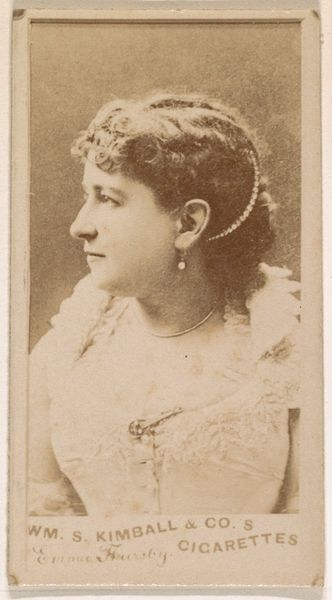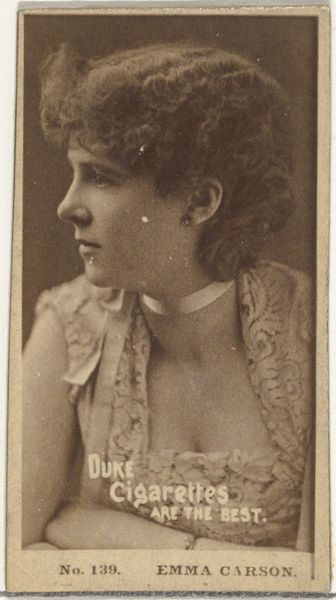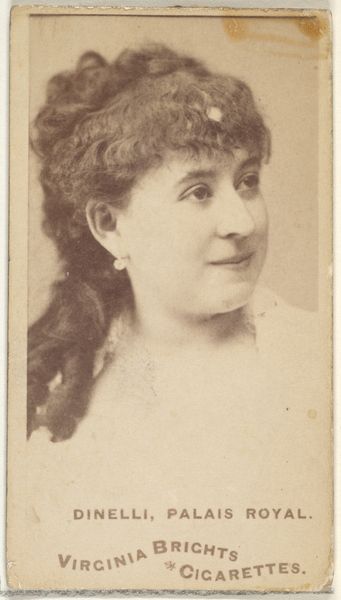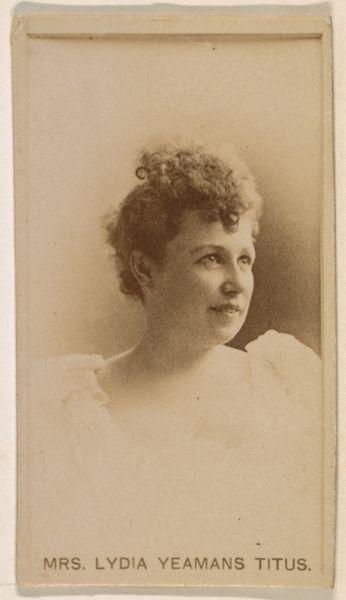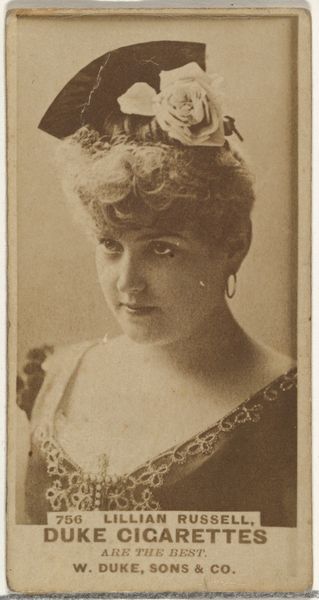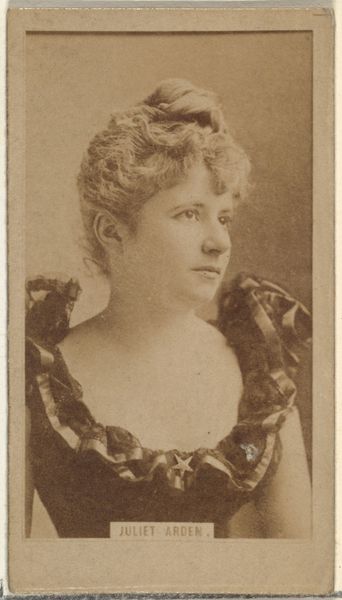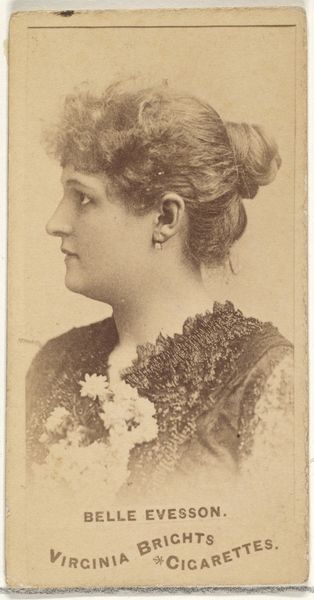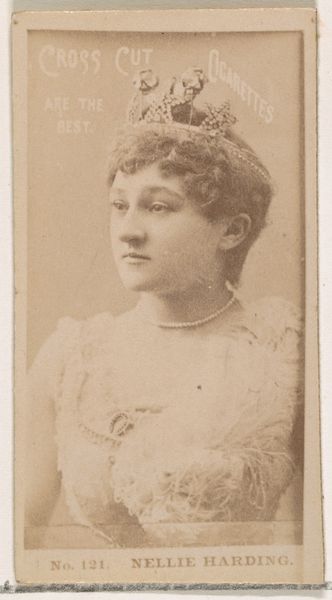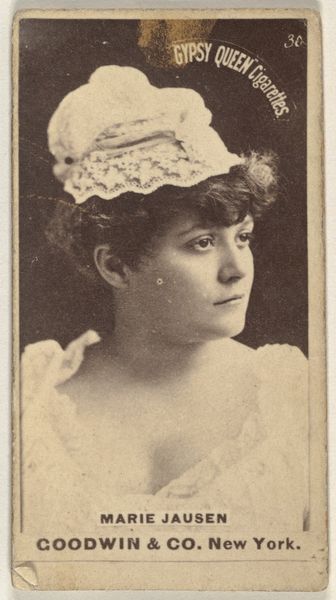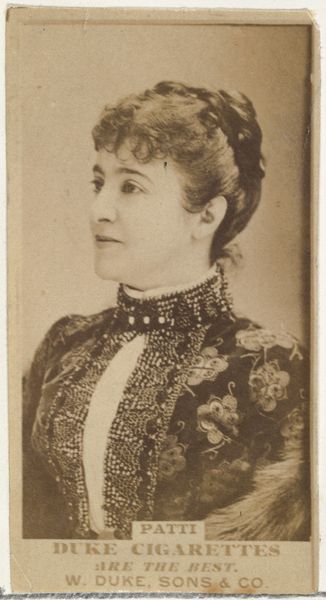
Dimensions: 3 3/4 x 2 1/4 in. (9.53 x 5.72 cm) (image)3 3/4 x 2 5/16 in. (9.53 x 5.87 cm) (mount)
Copyright: Public Domain
Curator: Here we have an albumen print from the late 1860s or early 1870s by Jeremiah Gurney, titled "Clara Louise Kellogg (1842-1916)." It resides here at the Minneapolis Institute of Art. Editor: It's so soft! A very subtle sepia tonality. I find my eye moving around the composition along the gentle curves: from the curls framing her face, down her pearls, to the ruffles of her dress. Curator: I see it quite differently. This is Clara Louise Kellogg, an opera singer, a powerful woman carving out a space for herself in the male-dominated world of the arts. Consider the performance of femininity: the hair, the dress, the jewelry—these aren't merely decorative; they are carefully constructed elements of her public persona. Editor: But look at the play of light on those pearls! The way the shadows define the folds of her dress… it’s a masterclass in using light to create form, transforming the materiality of her clothing into texture! It's a statement on Romanticism. Curator: Perhaps, but how complicit was Kellogg herself in this romanticized depiction? Female performers at that time were fighting to control their own image, countering the frequent sensationalism from critics and the popular press. We have to remember, portraiture back then was rarely an objective rendering; it was about constructing a particular narrative. Her image would have been as much political and economic capital, a negotiation between expectation, artistic intent and her identity. Editor: Yet, there is something profoundly genuine in her expression—a subtle intensity in the eyes that no amount of posing can completely conceal. Note the stark contrast of the flowers and dark background which isolate the subject's gaze; It keeps drawing me back. Curator: Indeed. And isn't it fascinating how a simple photograph can spark such different interpretations, revealing not only the complexities of the sitter but also our own biases and perspectives as viewers? Editor: Absolutely. A successful piece invites multiple readings. It offers endless entry points for interpretation through technique, composition and overall effect.
Comments
No comments
Be the first to comment and join the conversation on the ultimate creative platform.
